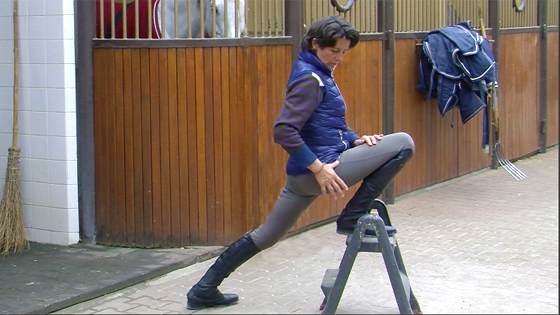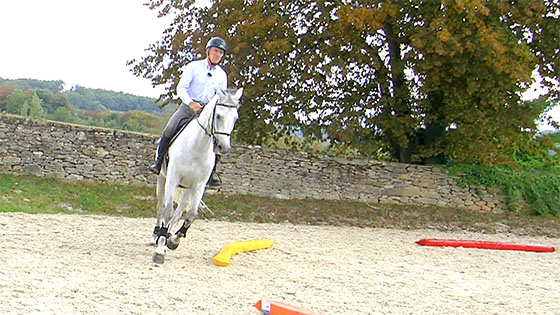Warm-up and stretching exercises for the rider

How to improve your straightness, relaxation and suppleness…This topic is developed by Veronique Bartin, horse rider and instructor of the Alexander program, through of a series of small exercises to practise a few minutes before getting in the saddle.
Veronique Bartin, horse rider instructor of the Alexander program, will show you a series of small exercises to practise a few minutes before getting in the saddle.
As Michel Robert says:
“Riders don’t pay enough attention to their physical fitness. However, we know that the rider’s stiffness, muscle or joint tightness have a direct impact on the horse. The slightest tension in an arm, the hips, or even an ankle…will impact directly the horse’s motion and his freedom of movement. If we require our horse to be supple and loosened, let’s start with the same level of demand for ourselves. To become supple and fit doesn’t require the same training as a high level professional athlete, so everyone can do it.
Practising a few progressive and simple suppleness exercises is already a good start. When you start your riding session, it seems obvious to you to warm up your horse before any serious work. So why to not do the same with our own bodies before getting in the saddle?
That’s what Veronique shows us today in this video with a few simple yet progressive exercises to practise every day. It will take you only a few minutes but it will save you some time in your riding practice.
We are going to learn how to get each part of our body straighter, more relaxed and supple with this very simple set of exercises to be practised standing up in the barn near your horse with no accessories or a dedicated space.
We are going to start by releasing the tension from the upper body: the neck, shoulders and arms. It is important as it will help the rider not only to improve the use of the eyes as an aid, but also to increase the elasticity of the arms thus to get a softer and more consistent connection with the horse’s mouth.
Veronique will then show us how to supple the low back and hips. This excellent gymnastic will help you in following the horse’s movements whatever the gait and while jumping.
We close the session by stretching the spine and the entire body. At the end, Veronique will feel that her legs are well grounded, her back is longer and her arms are looser. Each part of her body is loose.
There, she is ready to ride Phragy…who didn’t hesitate to tell us what he thought about it during this session.
Your turn to have some fun!

